Every brand has their top ‘stability’ shoe, albeit in different flavors. You know, the one with the biggest medial post, upper plushness, packed to the gills with marketable tech and a $140+ price – that kind of heady stuff.
Brooks has their Adrenaline GTS. Saucony has their Hurricane. Asics has the Kayano 22 masquerading as one. The 1260 is New Balance’s spin on things – you get the general idea.
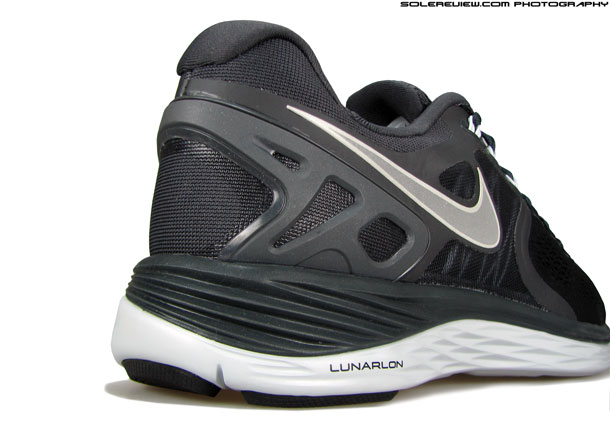
The Lunareclipse is a built-up Lunarglide, but never became the commercial success which the Glide is.
Once upon a time, Nike used to have such as a shoe. It was called the Equalon, and it existed for a relatively short lifespan of 4 years. Its upper had strong design cues from the Structure 10/11/12, and the bottom took a lot of inspiration from the Vomero.
Its demise could be linked to the Lunarglide blitzkrieg; after all, the higher priced Lunareclipse was supposed to be the Lunarglide on steroids. It had the same stacked midsole design of the Glide, but came boxed with more bells and whistles.
Except that the Eclipse did not quite catch on, did it? Maybe only for the first couple of years, when it did bask in the halo effect of the Glide. But the Lunarglide was the true hero of Nike’s novel approach to reinterpreting the support shoe category, and the Eclipse fell by the wayside over time.
Nike plans to change that with the Odyssey. And the brand’s given it a name inspired by Greek mythology, a tradition which seems to be Nike’s lucky charm.
Nike, after all is a Greek name, and many past and existing models have had Greek names. Pegasus, Perseus, Icarus, Vomero… the list goes on.
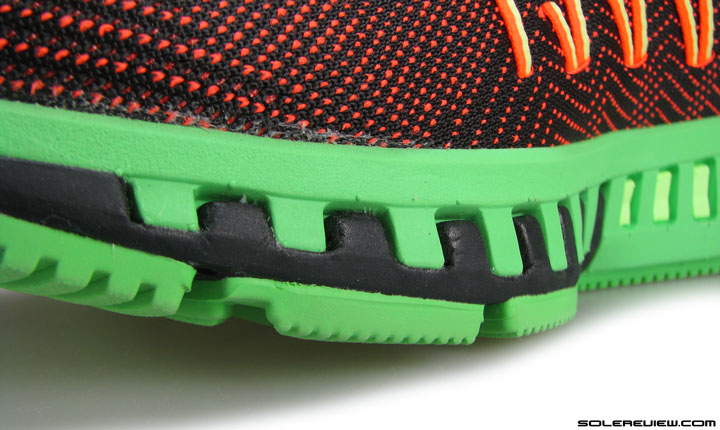
This new shoe goes one-up on the Structure, with the medial post reaching right up to the under-toe area.
And what is the Zoom Odyssey? The way it fits and feels, the Odyssey is part Structure 19 and part Vomero 10. The Structure 19 part comes from the Odyssey’s in-your-face ‘stability’ shoe positioning.
There is a looong medial post on the arch side of the midsole which spans from heel to toe. That part’s probably bigger than anything else in the market right now. It’s the bright green part of the midsole as seen in the picture above.
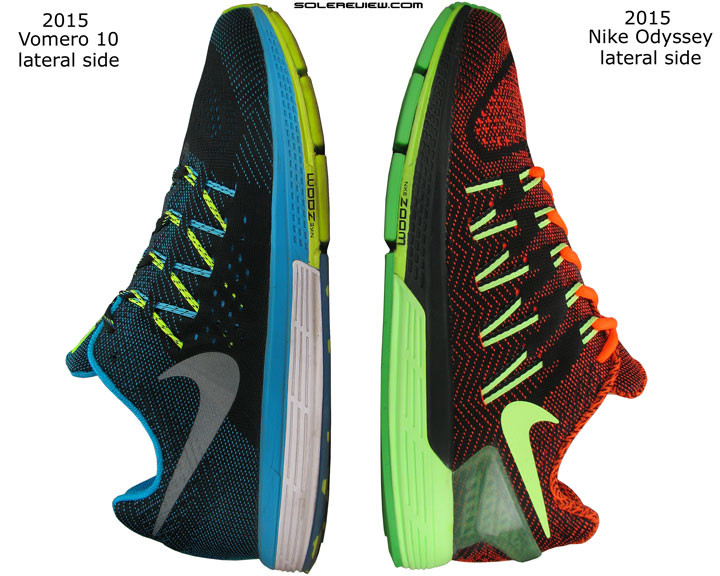
The side profile has a lot in common with the Vomero 10 (left). Observe the similar looking midsole profile and the Flymesh-y upper.
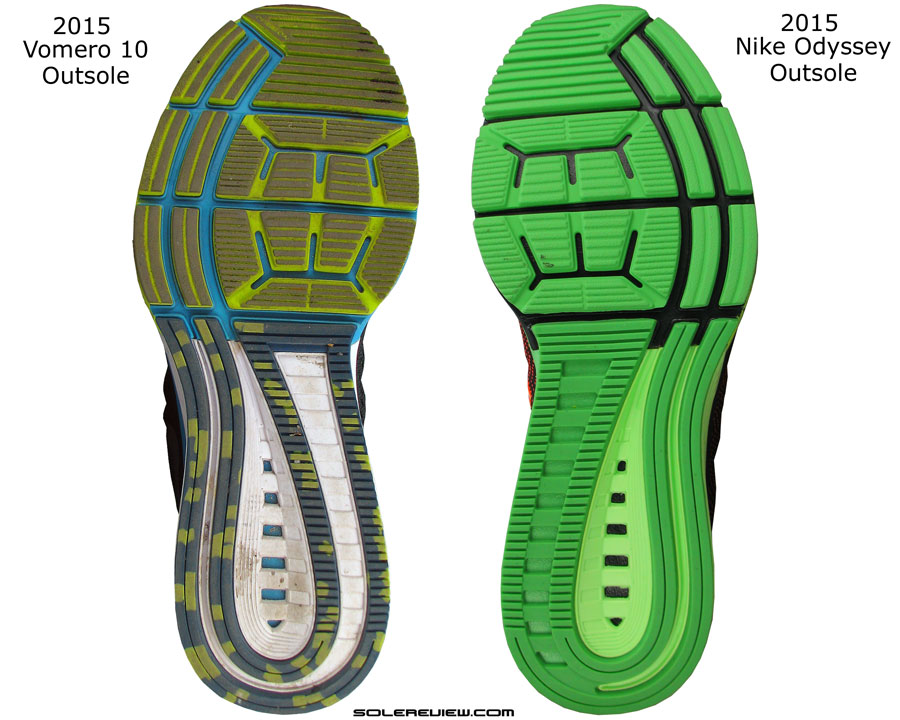
The Odyssey’s outsole is a near replica of the Vomero 10’s, except for the medial side bridged with more rubber.
Its Vomero genes can be seen in how the midsole is designed. The side profile looks very familiar, and the outsole is a near exact-match in design and material.
There’s softer blown rubber under the forefoot and harder wearing rubber under the heel and midfoot. And much like the Vomero 10, the Odyssey comes equipped with front and rear Zoom Air bags.
‘Pronation control’ shoes with medial posts have been around since the beginning of time, but we’re of the opinion that this category is a relic of the past, a footwear anachronism. This will ruffle a few feathers, but after reviewing well over 100 pairs and answering thousands of reader questions, we’re convinced that medial posts are absolutely useless – as long as any running shoe is innately stable. Of course, this is a theory, as is the entire notion of ‘pronation control’ footwear – so the irony isn’t lost on us.
The origin of firmer medial posts, or the whole pronation control concept can be traced to early biomechanical studies done in the ’70’s and ’80’s. More than a few studies concluded that injuries were caused by the excessive rolling in, or ‘pronation’ of the foot, and a shoe design which prevented this from happening could be beneficial.
In those days, there was true merit in these findings. All of it was linked to primitive running shoe design. You see, running shoes in the late seventies and early eighties did not benefit from the material and construction advancements we have today. All shoes were board lasted in the manner of dress shoes, meaning the upper was first lasted to the board, and then ‘stuck-on’ to the sole unit.
Back then, the sole unit was nothing more a sheet of blown EVA foam pasted to a rubber outsole. A board lasting technique also limited how wide the midsole base could be. This usually meant that the midsoles were of a super narrow profile, sometimes slimmer than the upper above it. The blown EVA foam also had this tendency to compress quickly or go ‘flat’ in a relatively short span of time. Durable materials like Polyurethane and compression/injection molded EVA weren’t used in shoes then.
Now every one’s foot rolls inwards during the gait cycle. It is just that some do it a little more than the others. So imagine what inwards roll of the foot did to an inferior EVA midsole. Over time, the medial side of the midsole flattened out, causing the foot to lean dangerously inwards. Almost as if the foot was sliding off the midsole.
When combined with high mileage and lack of training, we have no doubt that inwards roll, or pronation posed a real threat to the physical well being of runners.
Brands tried to rectify this by adding a ‘stability’ device or ‘post’ between the upper and the midsole. But since blown EVA foam was the real culprit, those medial posts had little effect as far as increasing stability was concerned. The solution was overall stability, and not a medial post per se. The EVA wedge midsole was limited in its means to deliver true stability.
A lot changed between the late eighties and mid nineties, a super-evolutionary period of sorts for running shoes, if you will. By 1995, board lasted EVA foam running shoes had ceased to exist, replaced by a combination of strobel lasting and more durable midsole materials like compression molded EVA and Polyurethane.
This made the shoe far more stable, and stopped the midsole from flattening out on the medial side. But the medial post stay put, like an evolutionary vestige which has outlived its usefulness. The industry continued to advocate the use of ‘pronation control’ shoes, and placebo techniques like ‘gait analysis’ are still widely used to determine which shoe is ‘right’ for you.
Don’t you find it strange, that except for traditional road running shoes, none of the footwear in other sports involving straight line running have medial posts? Football (both versions), baseball, track spikes. What the heck, even racing flats have long been spared of any ‘pronation control’ mechanism. Cricket shoes come with medial posts for no apparent reason, but that’s because Asics (who makes most of those) has copied the Kayano template.
Most modern day, firmer riding neutral shoes are stable enough, and we see no need for an additional medial post. Shoes such as the adidas Glide Boost, Brooks Ghost 8/Glycerin 13, Mizuno Wave Rider, Nike Zoom Elite or Saucony Triumph will do just fine.
Besides, the foot sits too high above the midsole to be affected by the medial post. Nike tried to change this by starkly contrasting the lateral and medial midsole densities on the Structure 17. But when we reviewed that shoe, we found it to be a stability disaster, much like Kayano 22.
One could argue that a ‘so and so stability shoe’ helped reduce soreness, or simply felt better. Sure, but have you tried all ‘stability’ shoes, or even neutral shoes? Chances are, a lot of so-called stability shoes will not suit you, and some neutral shoes will. And even for a ‘neutral’ runner, some shoes are going to feel better than the rest.
The one shoe/category fits all is a seriously flawed and oversimplified cookie-cutter concept, because running shoes are extremely personal. The key takeaway from doing all these reviews and interacting with our readers is this: Pick a shoe which fits and feels the best. It should be not be overtly soft (Nimbus 17), or do funny things to your gait (Structure 17).
And yet, the whole pronation control notion is so deeply ingrained in our collective psyche that everyone truly believes it. People in running shoe stores. And almost everyone working for a shoe brand. Speak to most designers, product managers and or even senior management in brands, and chances are you’ll get a consistent answer.
Most believe that shoes with medial posts are necessary for a certain group of runners. So clearly there’s no deception here. Just an old wives tale which everybody thinks to be true. Believing in conventional wisdom is another way to put it.
Even solereview did too, once. As recently as two years ago, we actually used to mention cringe-worthy things like how a particular shoe was ‘not suitable for people with high arches’. So we were no wiser, as you can see.
Exclusion to this line of thinking would be custom built orthoses. There are people who genuinely require supportive inserts for various reasons. And we believe that a professionally designed sockliner can help with certain issues. The insole is in direct contact with the sole of the foot, and is hence much better placed to provide supportive action.
Feel free to rip apart what we just said, but you can see where all this is coming from.
Our critique of pronation control footwear does not change the fact that the Nike Air Zoom Odyssey is indeed a very stable shoe with excellent ride characteristics. Key to this is an overall feel of firmness, and a balanced midsole design.
The inner midsole features a medial post which never seems to end, but it doesn’t result in the shoe feeling lopsided. For starters, the lateral (outer) sidewall of the midsole has a nicely filled up design. There are no deep grooves which might cause the heel to pull to one side.
Secondly, the midsole foam density is rather firm. The visual resemblance with Vomero 10’s sidewall is just that – the Odyssey does not have the softness of the Lunarlon topping. The only thing soft on the Odyssey is its faux-Ortholite footbed.
There are a few other things. The medial post isn’t rock hard like on the Structure 18. Instead, there’s some amount of compression built in, which creates a sense of balance between the lateral and medial midsole foams.
And you have the cardboard/cellulose board layered over the heel Zoom Air bag, which dials in a degree of stability.
What really brings the supportive ride home is the concealed layer of softer midsole foam (in black). In a what is a design parallel with both the Lunarglide and Vomero, a top layer of foam extends from under the heel center right till the toe tip.
Not only does this foam refine the transition quality, but also creates a softer core within a firmer foam casing. This helps keep the heel seated in the rearfoot center.
Not to be overlooked is the Odyssey’s outsole design. It is full contact, with harder rubber in the mid and rearfoot and softer rubber under the forefoot. The carbon rubber is identical to what’s used on the Pegasus/Vomero/Elite, which makes the heel and midfoot section extremely durable over long term usage. The blown rubber on the other hand, is more susceptible to the ravages of time and mileage.
Till the point where the midfoot ends and forefoot begins, there’s continuous coverage through the ‘crash rail’ design. This smoothens heel to toe progressions.
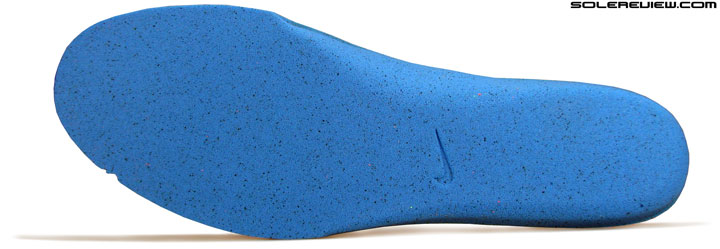
Slightly strange that the $10 cheaper Vomero features an Ortholite version, while the Odyssey does not.
The Odyssey’s cushioning comes with a caveat. At slower speeds, the ride is actually quite firm and flat except for the initial layer of softness coming from the thick insole.
Cushioning and responsiveness gets activated at higher speeds, when the Zoom Air bag and the softer Cushlon core becomes accessible. This reminds us of some of adidas Boost models, where the ride behavior changes with speed.
So don’t be discouraged when you find the Odyssey firm when walking around on the shop floor. Get on the treadmill if the place has one, and try to unlock some of the cushioning experience with a quick run.
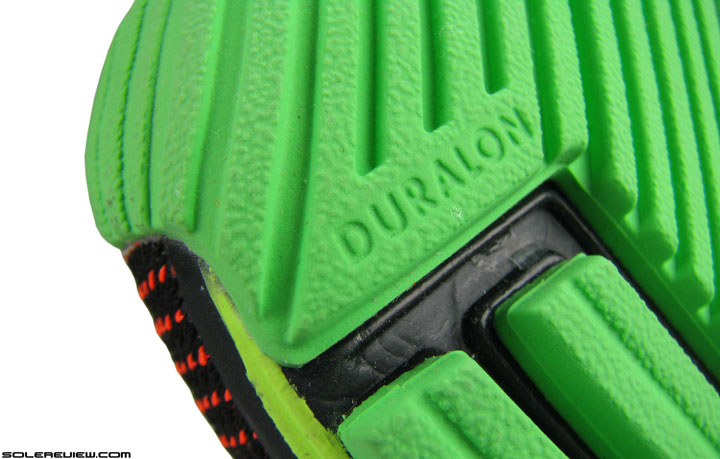
What the forefoot lacks in foam volume, it makes up with a softer midsole, blown rubber outsole and a cardboard-less Zoom Air bag.
What we said of the Vomero 10 also holds true for the Odyssey. That the forefoot has a softer feel than the rearfoot, and that’s because of three factors. The Zoom Air bag does not have a cardboard cover unlike the heel bag (which has one), so the foot has direct access to its responsiveness. Then you have majority of the forefoot midsole constructed of a softer foam, except for part where the medial post interlocks with it.
The underfoot is padded with softer blown rubber in the front, so when all these features combine, you have a softer front-end. Needless to say, the Odyssey will find a happy home in a forefoot striker’s running shoe closest.
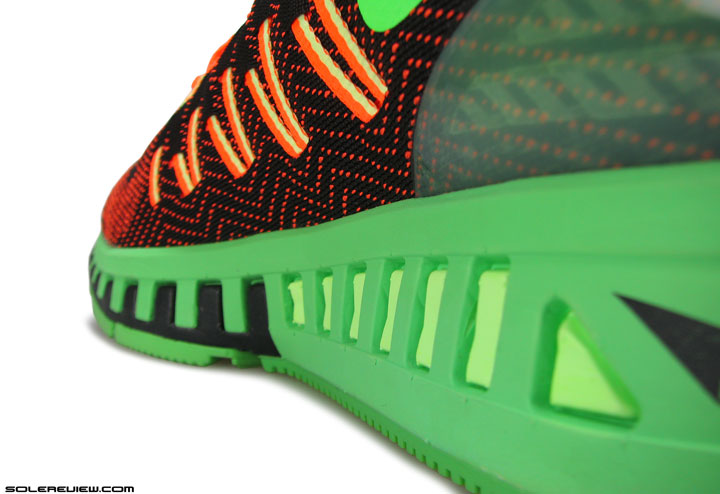
Regardless of the multi-density deal, the ride feels very consistent, and the transitions come quick and effortlessly.
The net sum of all the parts put together is a great ride. There’s a strong support overtone to the midsole, yet delivers gobs of responsive cushioning when summoned. The consistency in midsole material – which is the black foam lining the center – helps create a quality of transition which is efficient. The latter is also helped by the firmness and the weight of the shoe.
For all what the Odyssey manages to pack-in, a half pair of US 11 comes in at a respectable 327 grams/11.5 Oz. While that is not exactly featherweight, it is light in relative terms. The Odyssey weighs less than the Adrenaline, Inspire, 1260, Hurricane, Ravenna and the Kayano.
Another shoe we recommend highly is the adidas Sequence Boost. Last year’s 7th version was great, and even the 8 is very good except for a few areas. The Sequence’s weight is also exactly the same as the Odyssey, and it behaves similarly. No bias, a very balanced ride, and cushioning on demand in a lightweight package.
One thing which the Odyssey does very well is delivering a distraction free and a consistently comfortable ride. There’s aren’t any soft spots, pressure zones, or bumps felt underfoot. This isn’t surprising given the well proportioned midsole design, but there’s a reason why we say this. Which brings us to the topic of the Nike Structure 18 and 19.
Runners looking to switch from the Nike Structure will want to know how these two compare, and that’s a valid ask. Both these models are from Nike’s stability category, so it’s worth spending some time highlighting the differences.
It must be pointed out though, that while both the Structure 18 and 19 share an identical midsole design, they ride differently due to a few design updates.
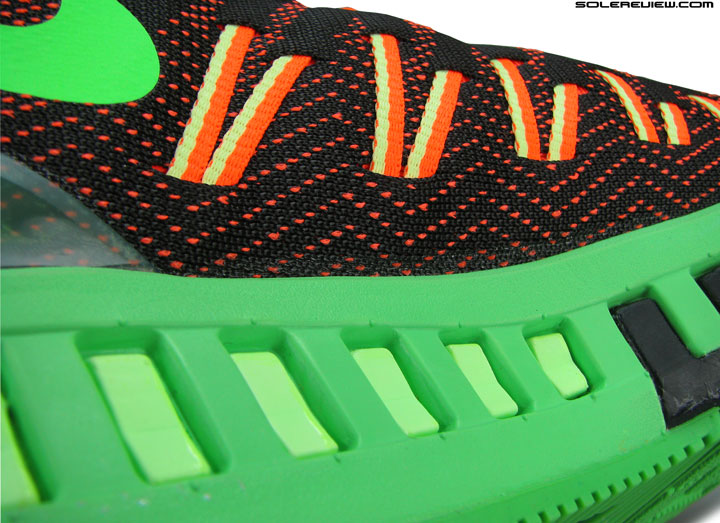
The prominent under-arch curve of the Structure 18/19 is missing on the Odyssey. Some will like this aspect, others might miss it.
Sure to be noticed is the way in which the Odyssey’s under-arch area is constructed. On the Structure 18, the very hard medial post is interlocked with a softer wedge of midsole foam. This foam extends into a high, and somewhat aggressive curve just under the arch.
This is felt underfoot regardless of whether you’re running or walking. Something like this isn’t universally accepted. Some will love the feel of the ‘under-arch’ support, while others would love to shave this part down.
Well, don’t shave it down, and get an Odyssey instead. The new midsole design flattens the pointy curve of the Structure, and sticks to a traditional midsole edge like the Vomero 10. Some might miss the midsole curve, but in the bargain you experience a less distracting feel.
In addition to all that, the Structure 18 is a firmer riding, and more stable shoe than the Odyssey. This is mostly due to a much firmer midsole (and lack of a softer core+heel Zoom bag), and a rigid insole base. So no matter what your running speed was, the Structure 18’s heel felt firm and flat. The forefoot was more responsive due to the Zoom Air insert and blown rubber.
On the other hand, the 2015 Structure 19 turns out to be a different beast. The new Structure 19 comes with a couple of updates which makes it feel vastly changed from the 18. The insole with the rigid casing has been replaced by a mushy open-cell foam type, and the midsole foam has been softened.
So it ends up softer, and less stable than both the Structure 18 and Odyssey. The heel feels unstable, and a lot of that is due to the lateral midsole groove coming into play. On the Structure 18, this was not an issue because the midsole was extremely firm, and hence resistant to compression. There’s no protection under the insole too, so the Structure 19’s heel feels like it’s pulling to one side.
Moral of the story? The Structure 18 is the most stable and firm, followed by the Odyssey and then finally the strangely altered Structure 19. We still have to put in a lot of miles on the Structure 19, but so far things aren’t looking good for its overall score.
Before we jump into the upper story, a few flaws on the Odyssey are worth mentioning. This is an extremely well designed shoe, but the pair we bought had shoddy finishing. There’s a lot of glue smeared near the heel clip, and lasting marking lines are visible near the toe area.
This did not cause a fit issue like on the Tempo Boost, but this example should have landed at a factory store with a healthy knock-off its retail price, and not sold to customers at full sticker. We did praise the Vomero 10’s fit and finish, but unfortunately the Odyssey does not live up to the same standards.
It’s becoming routine on Nike Flymesh featuring models to completely leave reflective elements out, and the Odyssey is a nod to that thinking. This shoe has no reflective elements, even of the ‘faux’ variety.
And lastly, there are no widths available for the Odyssey. There will eventually be a NikeID option, but that is more expensive and has limited distribution.
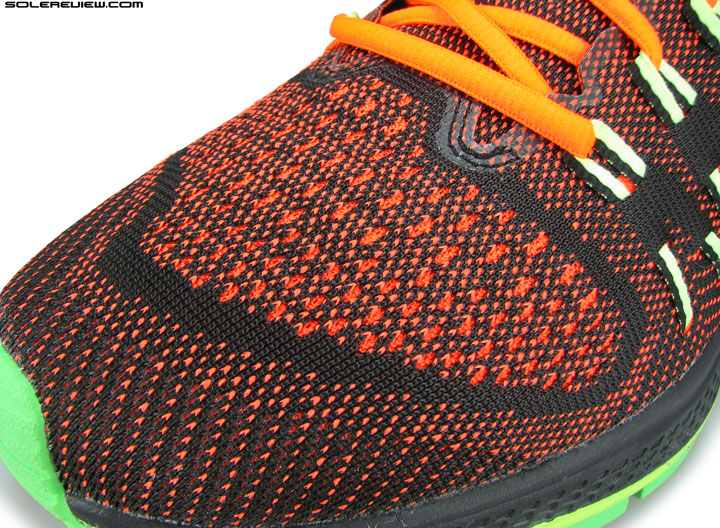
This is Nike’s second year of the Flymesh. Things are looking better as far as the fit quality is concerned.
Nike introduced its new ‘Flymesh’ upper on last year’s Structure 18 followed by the Vomero 10, and the fit quality always came with a weak spot or two. The Structure 18 had an uneven spread of midfoot lockdown, and the Vomero came with a heel which felt loose.
Things became better with the Zoom Elite 8’s design, and the Odyssey improves on the fit even further.
The fit pressure inside the upper feels uniformly distributed. The forefoot is snugger than both the Vomero 10 and Structure 18, a result of moving the lacing forward (towards the toe) by around 5 mm and corresponding adjustments in the Flywire’s placement.
Yet, there’s decent space in the front, leaving exactly a thumb’s width of margin. The Odyssey runs true to size, like the Elite and Structure.
The Flywire cords are now flat, so you can’t really call them ‘wire’ now, can you? Anyway, even the existing Flywire in its string form is so far away from the original Vectran fibre design that talking about it is not worth wasting time on.
Nike is pretty good at calling very ordinary things by extraordinarily sounding names, and that’s what this is.
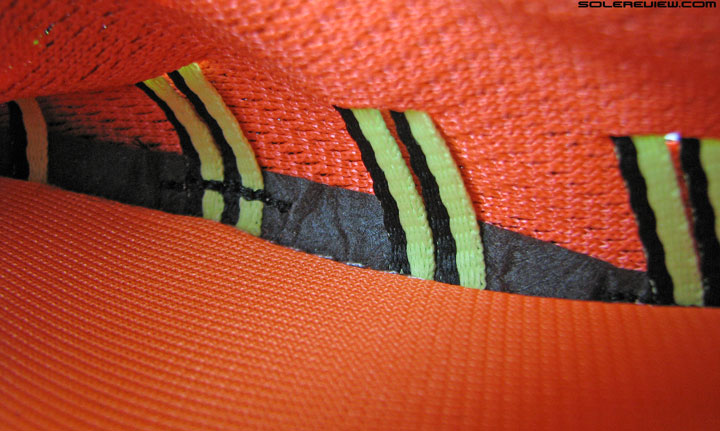
Most of the strap is outside, and it only enters inside near the midsole edge. These are tacked on to a reinforcement.
The flat loop format comes with its distinct advantages. On the outside, the straps sit flush with the upper – both on the sides and the place where it forms the lacing loop.
This aspect prevents any pressure hot spots which was experienced with the prior versions of thread shaped Flywire. The straps mostly stay exposed on the outside, held by guides knit into the upper structure. Inside, the straps lie anchored to a reinforced strap like all other Flywire based models.
Interior fit is smoothened by the inner sleeve, which also ensures no tongue slide. On the last few Flymesh models reviewed, namely the Structure/Vomero/Elite – the tongue padding was very minimal, which let some of the lacing pressure through.
Mercifully, better sense has prevailed now, and there appears to more foam packed inside the Odyssey’s tongue.
Nike has used a new tongue and collar lining on the Odyssey, eschewing the use of its tried and tested premium lining. Has a soft hand feel, so nothing to complain here. The heel grips far better than the Vomero 10, and that’s because of a couple of reasons.
Both the Vomero and Structure (18 and 19) had two eyelets holes in addition to the Flywire loops. The reserve one was meant for heel lock lacing, which normally comes at the expense of the lacing length falling short. On the Vomero 10, if you did not use the last eyelet, the heel felt loose.
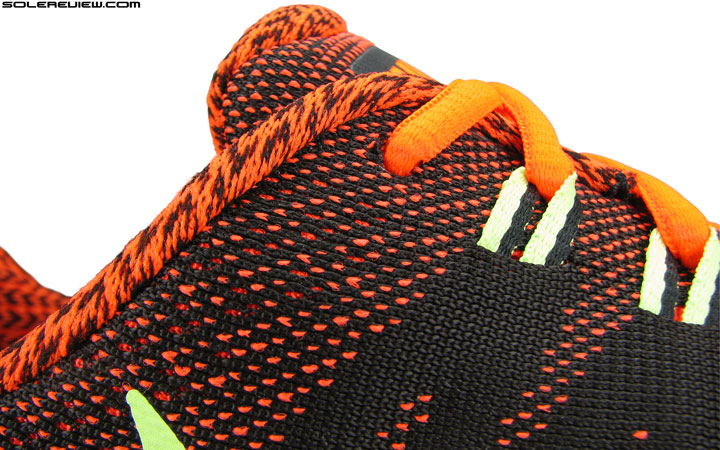
There’s the missing row of heel-lock lacing. Instead, the solitary eyelet moves backwards relative to the Vomero.
The Odyssey does something different. It eliminates the last eyelet altogether, and instead moves the solitary eyelet towards the heel, somewhere in between where the two eyelet rows (as in the Structure/Vomero) would have been.
This helps secure the heel area better, with only one downside. If you wanted to make the heel grip even better, there’s no fallback in form of the last eyelet.
There’s also an external heel clip, which isn’t there on the Vomero/Structure. This is a design borrowed from the Lunarglide/Eclipse, wrapping not only around the heel but partially under it. And know you must – it does not have the invasive feel of the Lunarglide 6/Lunareclipse 4. The heel clip design has been corrected on the Lunarglide 7, and the Odyssey also gets this non-intrusive counter design.
So there you have it, the Nike Air Zoom Odyssey. If a running shoe with a medial post makes your day, then this is the model to buy. It is actually stable, has responsive cushioning, and is fairly lightweight.
We have a hunch that this shoe is going to become immensely popular in its category.
(Disclaimer: For this review, Solereview bought the shoe at full US retail price.)

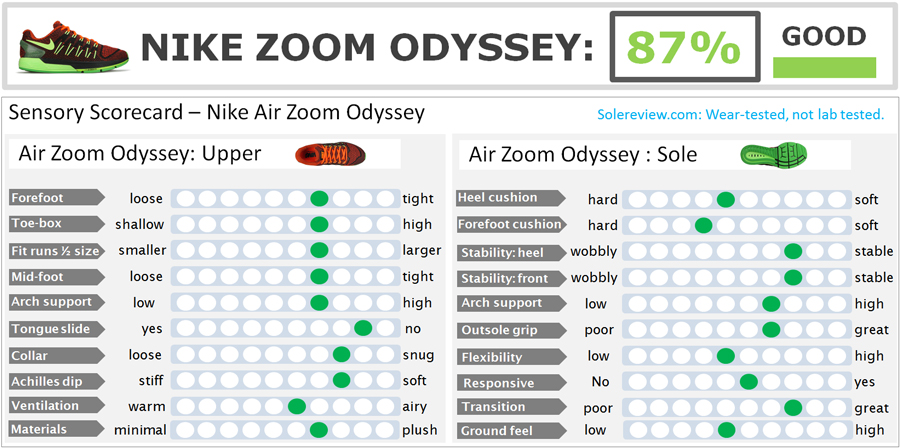
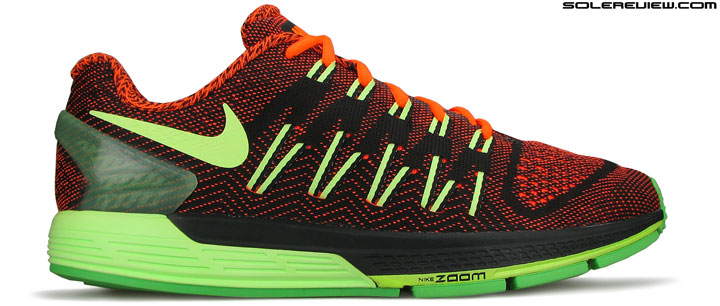
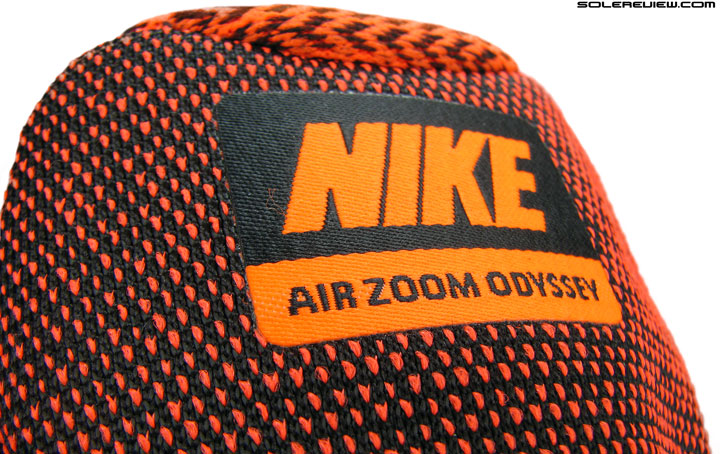
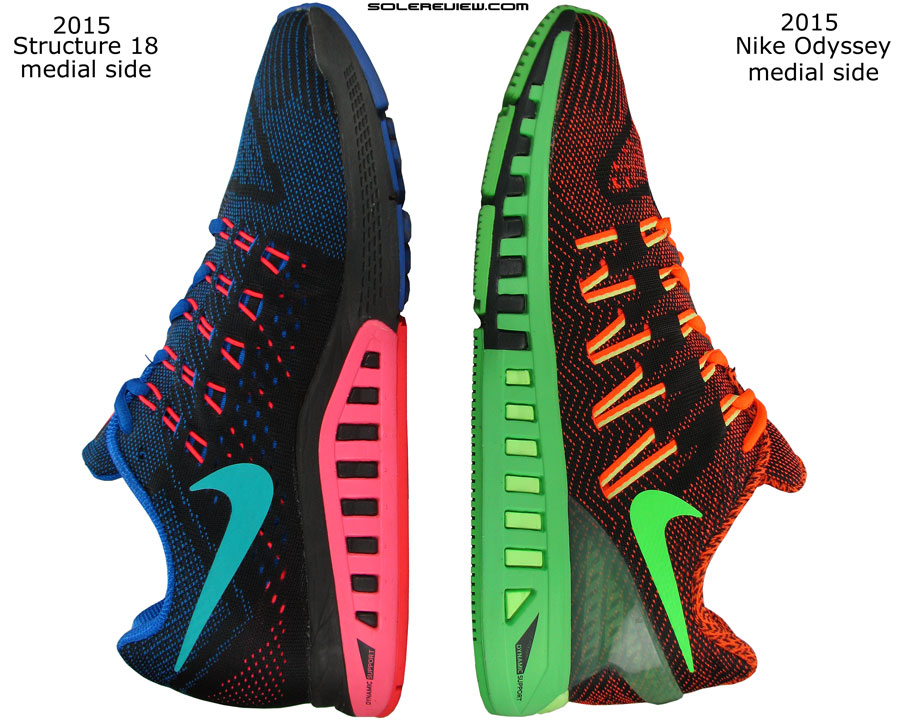
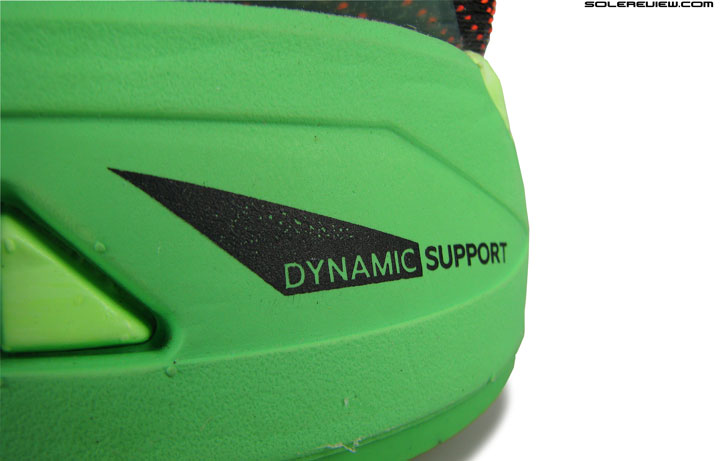
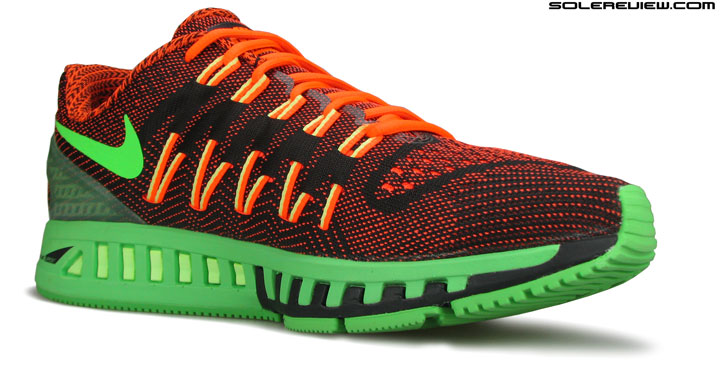
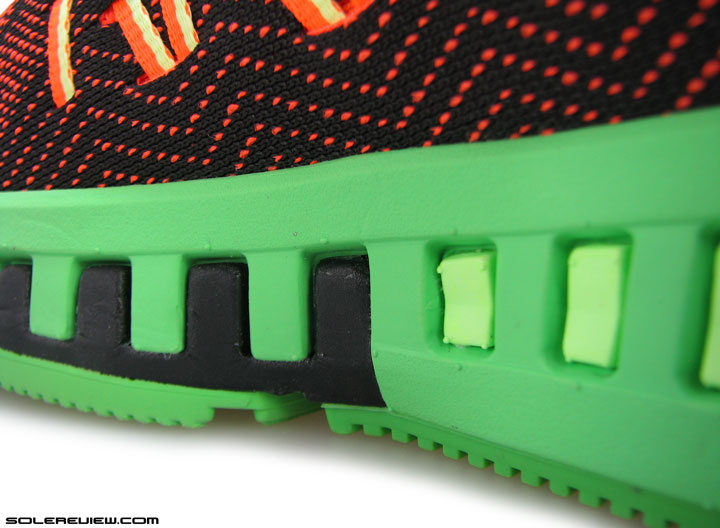
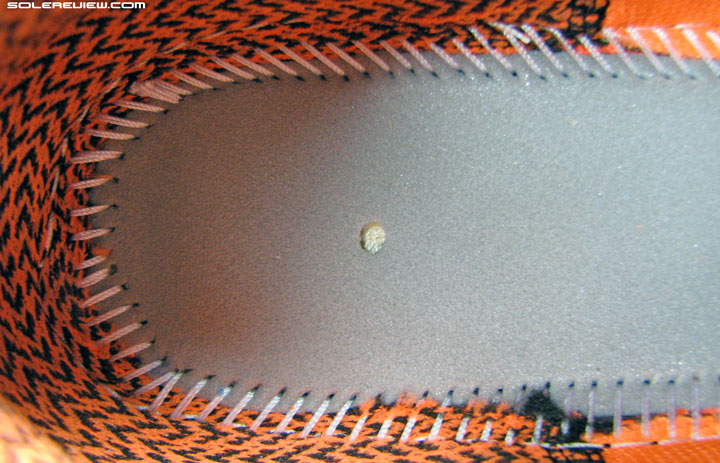
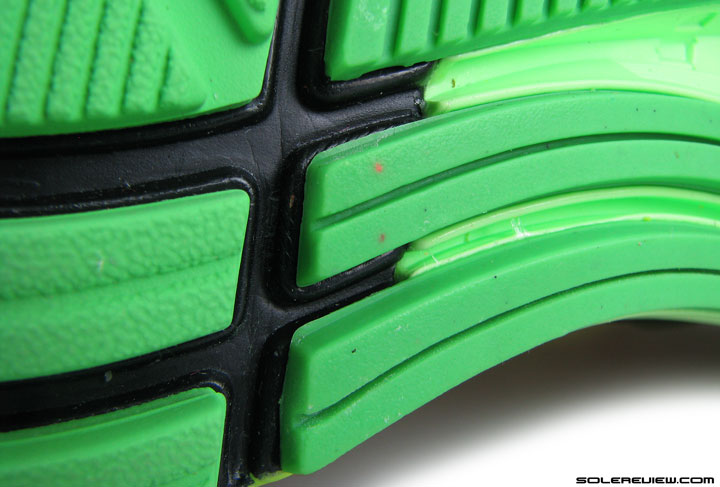
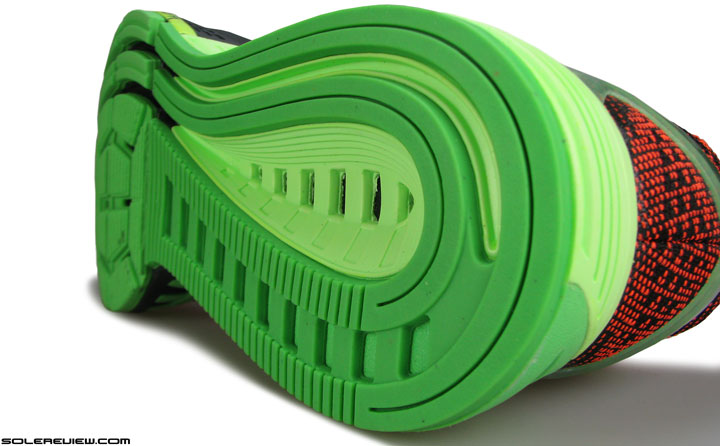
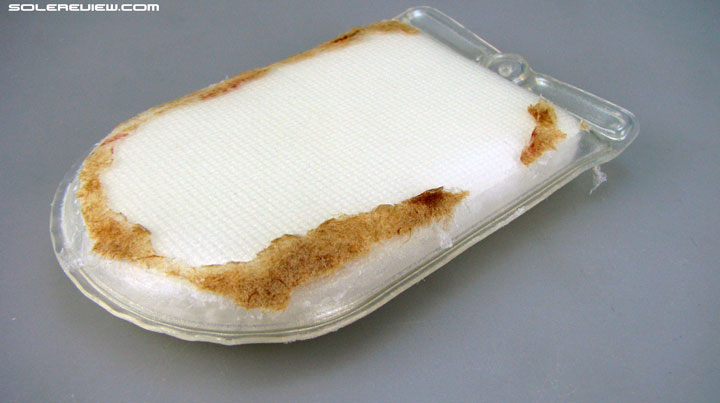
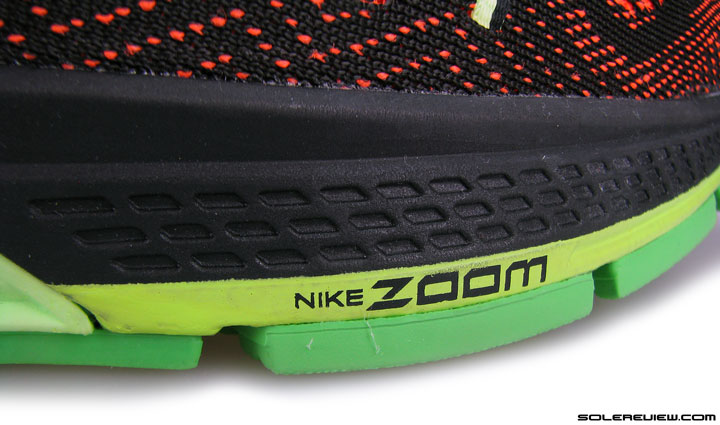
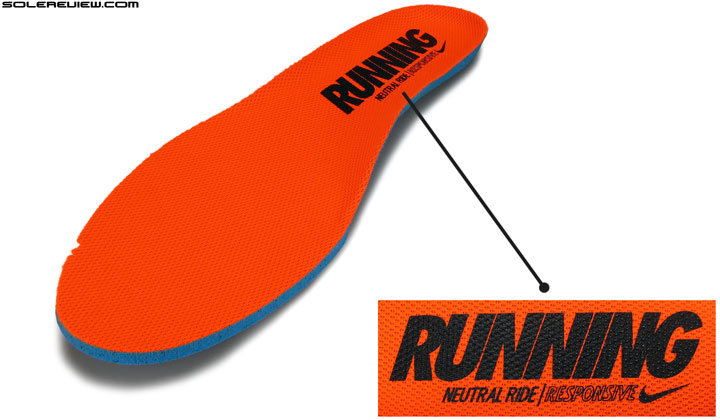

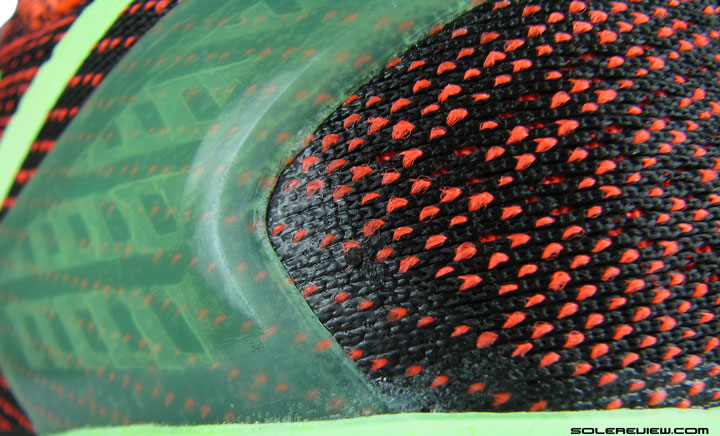
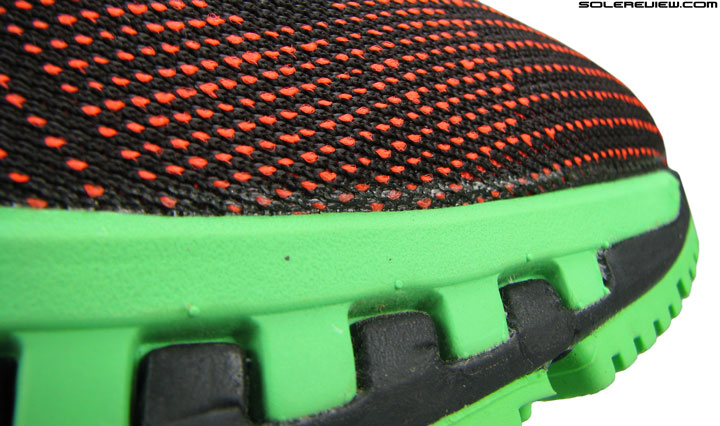
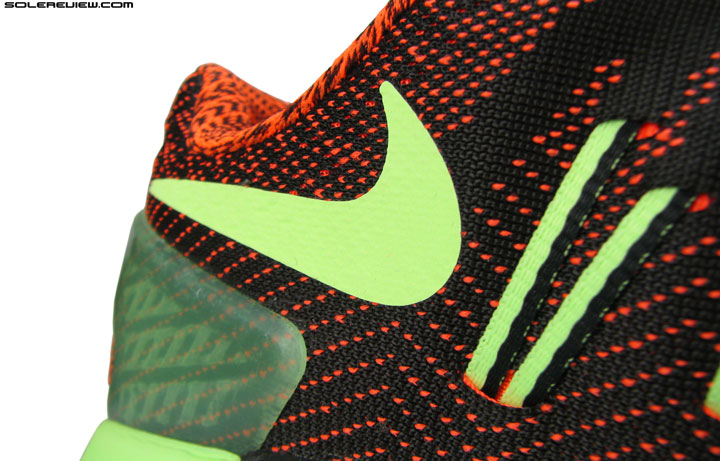
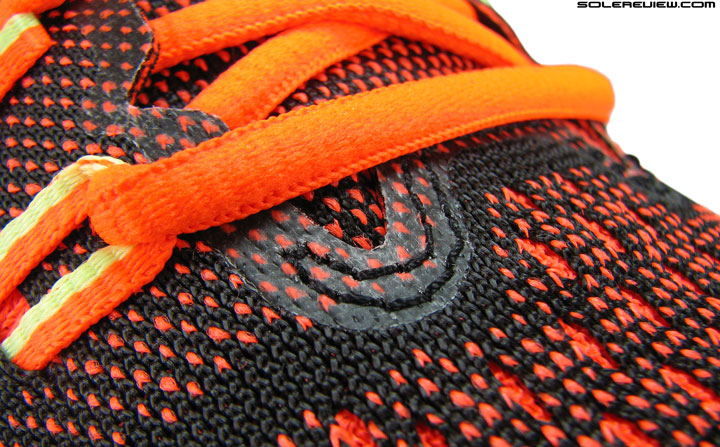
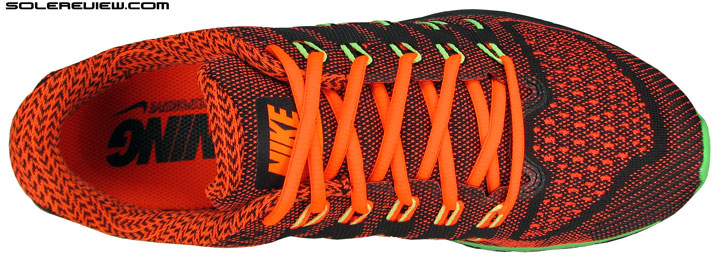
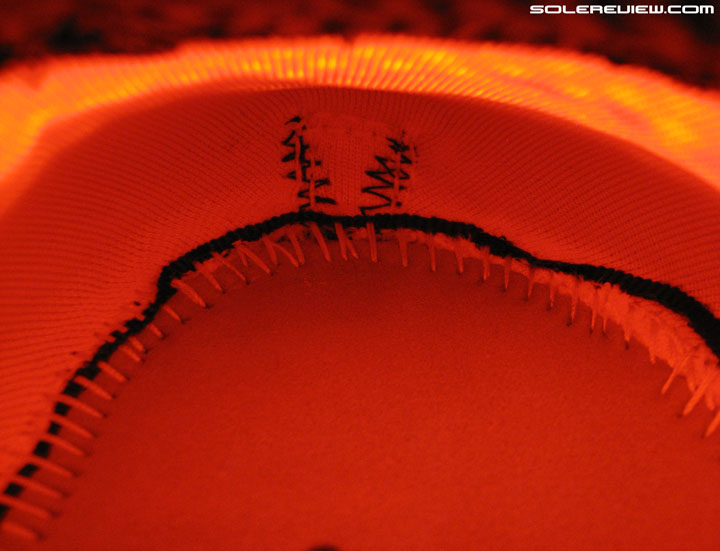
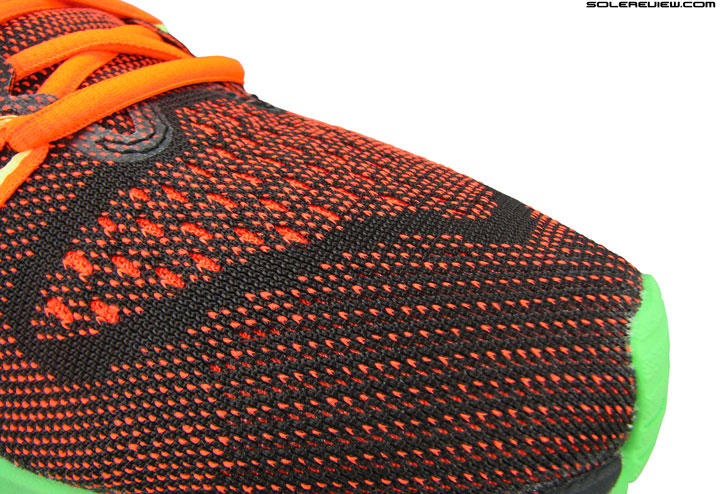
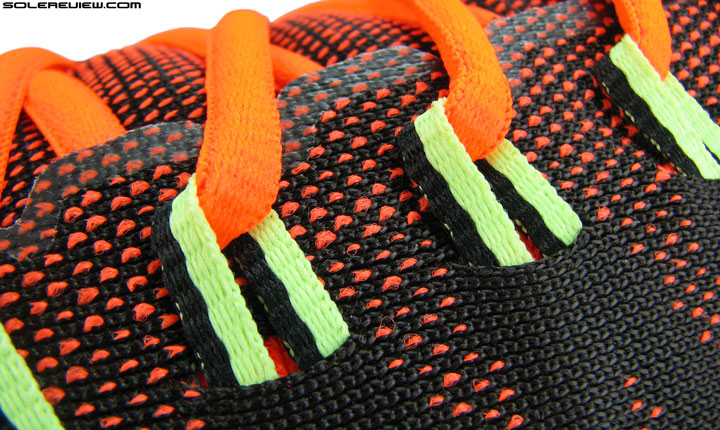
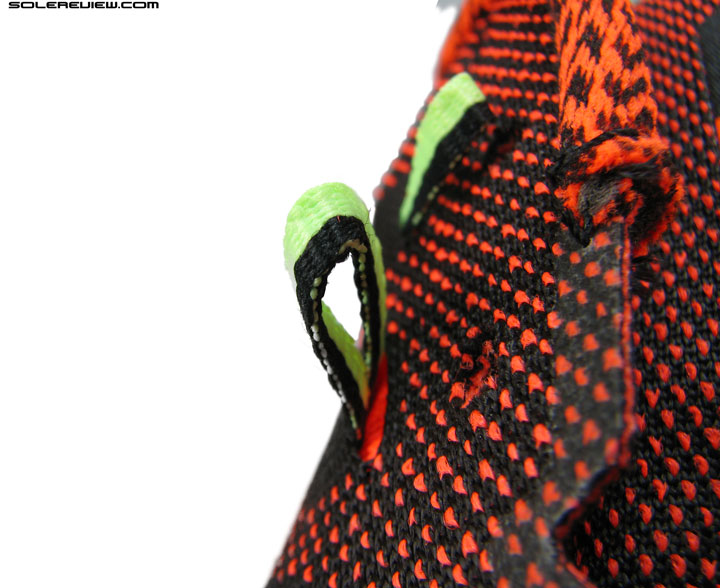
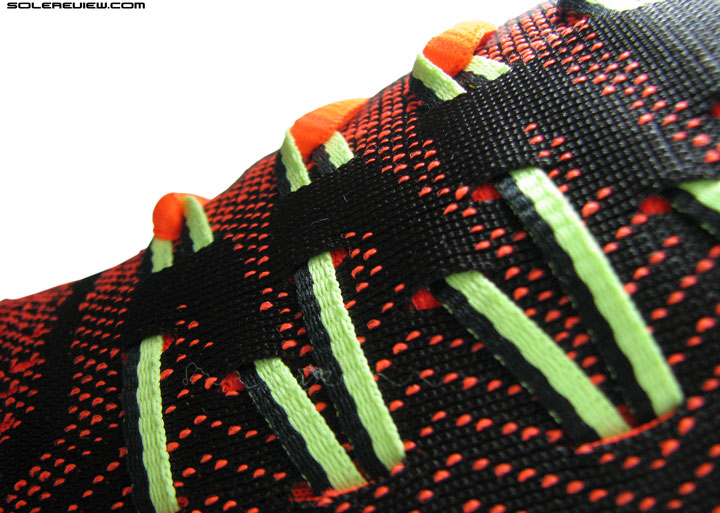
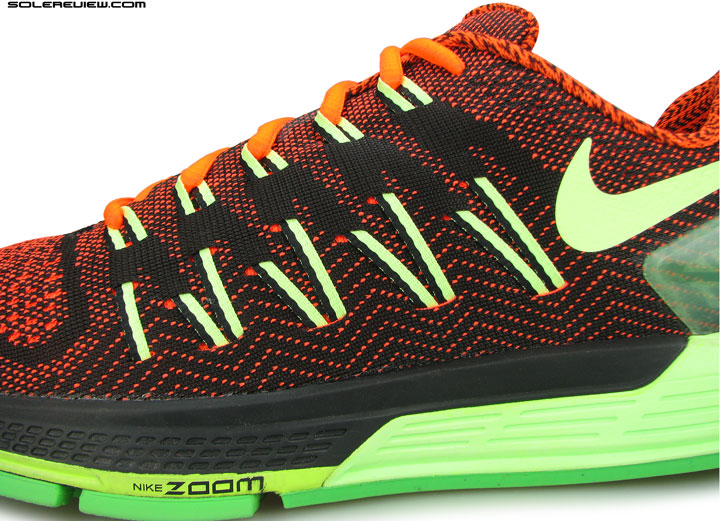
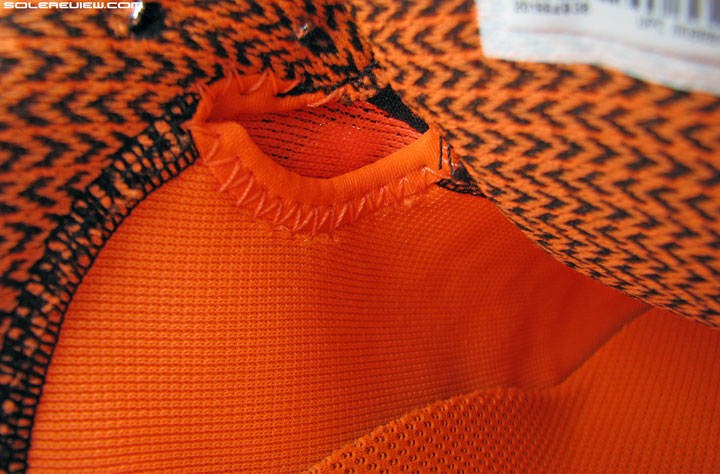
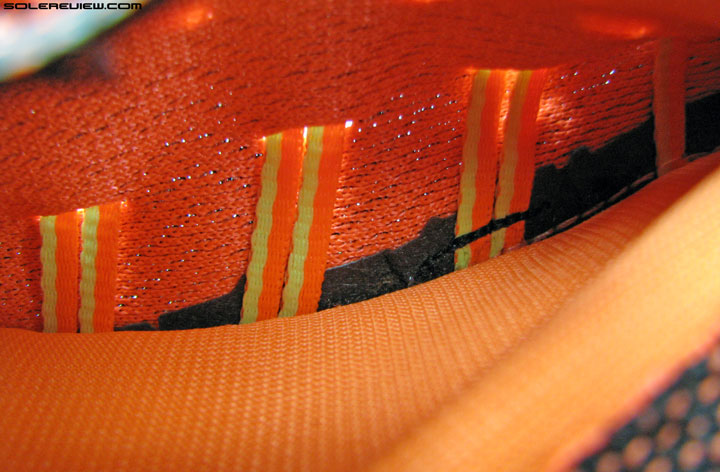
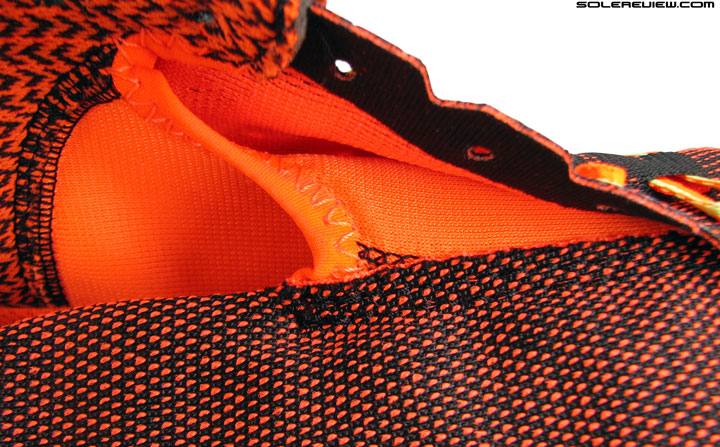
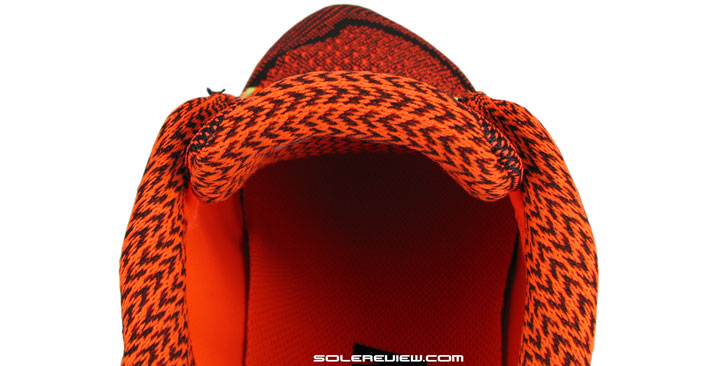
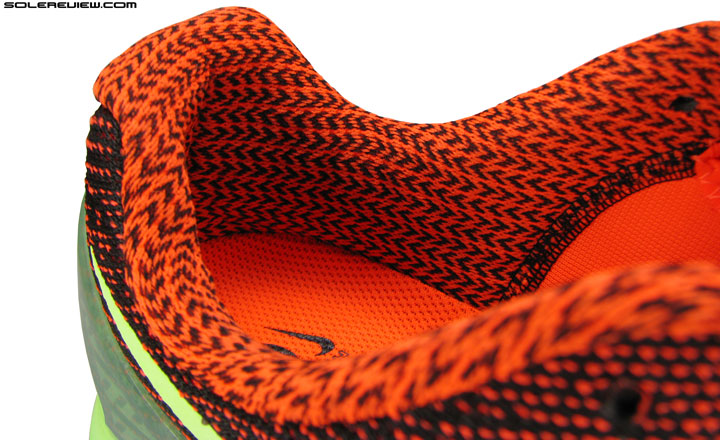
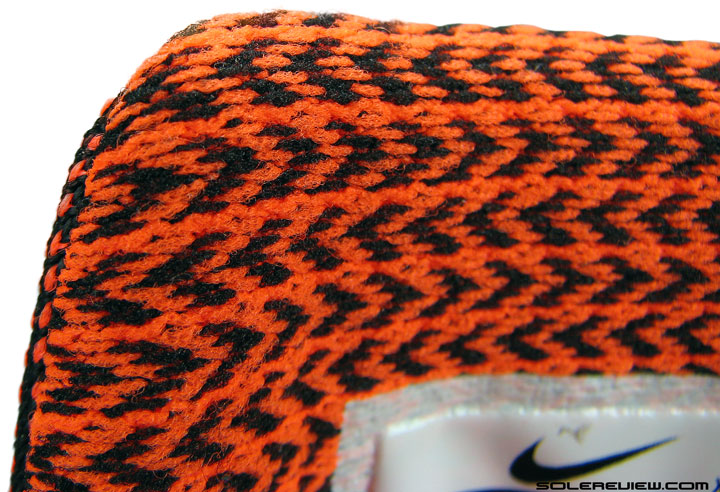
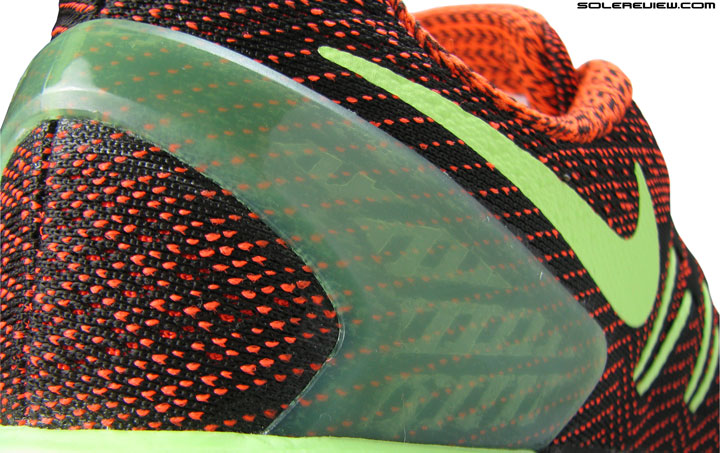
58 comments
Stability shoe means runners’ foot stable when hitting the ground, to offset the ankle angle, not the shoe itself stable. Why keep criticizing shoes have bias? A shoe with uniform material, stack height across outside and inside, does not prevent foot inroll.
I find the mold used in creating a neutral shoe and stability shoe is different generally, I mean the sole’s shape. A list of insole shape photos can illustrate what I mean. In Runningwarehouse, there is “currexSole RUNPRO Insoles” LOW Profile, MEDIUM Profile and HIGH Profile, the horizontal photo shows their different shape. When I wear/tried neutral shoes, I feel like MEDIUM or HIGH Profile, stability/motion control shoe, LOW Profile. Neutral shoes, not just arch height higher, the outside height is also higher. Stability/motion control shoe provide a flater platform for flat feet.
Generally, Neutral shoes for high arched feet, underpronators, Stability/motion control shoe for low arched feet, overpronators. Manufacturers use the combination of the insole and midsole to meet different targets.
Only running shoes have pronation control category, because we have demand. Running population is huge. Other sports specific shoes don’t have, because demand is not large enough to overcome the cost.
You’re missing the point. How is a shoe with a medial post better than a shoe which is inherently stable (without the medial post)? Agree, a shoe with uniform material and stack heights does not prevent foot roll – but we never said it does.
And matching the ‘arch type-to-shoe” theory – can please cite research sources/papers (with large sample size and correct control conditions) which proves its efficacy? You’re just quoting what the brands/retailers tell runners all the time.
And sorry, there’s a flaw in your argument that ‘other sports specific shoes don’t have demand’.
In 2015, Nike running footwear was only 18% of total footwear sales. The ‘other shoes’ contributed to 82% of sales.
No demand for anything but running shoes? You ever see how many basketball shoes Nike sells?
Btw, I have a flat foot and have never run in anything but neutral shoes because they feel good for me. And I’ve never had an injury because of it despite 50k miles and counting.
Thanks for the review. I’d like to know which are the key differences between Odessey and competitors such as Kayano 21, Adrenaline GTS 15, Saucony Guide 8 and my beloved Brooks Trance 12.
Will you suggest Odyssey for daily training + half marathon + marathon for a flat feet overpronator runner (1,84 m and 73 kg)?
Besides the Trance 12, which other shoe models have you worn and liked?
Trance 12 were teh best to me. I had good feelings with adrenaline GTS 15 but they lasted only 500 km and I only ran Half Marathon with them; Kayano 21 are confortable but too soft and heavy and have very poor response. With Guide 8 I had a bad experience, since the beginning I’ve felt that they lacked support especially for long runs, infact I had an injury at the knee for the first time in years (IT band syndrome)
The Odyssey is quite different compared to the Trance, but still remains one of the best motion control/stability shoes today. It feels light and responsive, and the upper fit is great too.
The Kayano 22 is much softer/less stable and heavier than the Odyssey; and the guide and Adrenaline 15 are firmer than the Odyssey. If you liked the Adrenaline except for its durability, then we have a feeling that you’ll like the Odyssey too.
Avoid the Nike Structure 19, however, if you were considering them.
Another fun and insightful review. I’ve been ranting the same rant against silly running shoe designs since the 90s. Oh, the horror of the original Asics Gel-Lyte III, with its medial posts and split-tongue!
Being an old-timer, you would have seen it all!
Nice work as always. I recently tried the Odyssey on side-by-side with the Structure 19, and was surprised by just how much plusher and softer the Odyssey felt even when just jogging up and down the aisle at the store, even though it’s got the longer medial post. Between the traditional 12mm drop, stable platform, accessible
cushioning, and comparatively-light weight, this looks like a promising
option for days where the miles are long and easy.
Certainly a better shoe than the Structure (and many others) in this category.
I really enjoyed the discussion in this review. There seems to be a growing set of voices questioning the role of pronation control in modern running shoes. I think it was in one of your UA reviews that it was mentioned that Under Armor were not designing these types of shoes as they did not believe in them. Having recently read “Born to run” and “Running with the Kenyans”, the topic of barefoot/minimalist shoes has been of interest and it is certainly drawing my interest.
I am far from making conclusions, but I have been running on generally “less” shoe this past year (NB 1500 V1 and 1400 V3) and am liking it (that said, the 1500 does have a medial post…) However, the 1400 has caused me no problems and I was a little scared of it, due to its light weight.
People are beginning to realize that a singular approach to running shoe fitting is not the ideal solution. Variances in running form and the shoes themselves complicates things further.
Some fresh thinking is the need of the hour, like how Hoka came in and spoiled the zero midsole party.
The 1500 V1 was awesome, eagerly waiting to put some miles on the V2. And also the 1400 v3…
We’re so grateful for your support, thanks again. Hope we get some more help before Christmas.
The whole discussion about pronation and whether the shoes to supposedly prevent overpronation work is very interesting. Do you honestly believe everybody should wear a neutral as opposed to a stability shoe? I found that the Kinvara hurts my arch a bit (which could be caused by the underarch support? that the Kinvara has, although I’d doubt it’s neutral shoes in general.
We’re against generalization, and not against motion control shoes, or advocating that everyone should wear a shoe from the neutral category.
The truth is, getting the right running shoe is a complex process, and using gait analysis to simplify one’s shoe choices is not correct.
My favorite advice is: If the shoe fits, wear it. Honestly, the best measure of success that I have seen with runners and also anecdotally with myself is this: If the person feels that the shoe is comfortable upon step in and they like the way it “feels” when they run a short distance while trying it out, the “type” of shoe is more or less irrelevant. Rather than focusing on all of the elements of a shoe that categorize it, try to learn to tune your senses so you can best judge what shoes “feel” great to you and realize that what feels right for you is unique and might not feel good to the next person.
^^^this.
Hello, big fan of your site here. How do you compare this shoe to the lunarglide 7?
I hv been wearing the LG7 for a few months, the fit is great except the toe area is bit too roomy for me, and i found a very little heel sore after a 10Km run.
Do you think the Odyssey would fit me? and yes I m slightly flat foot.
For what it’s worth: I have both the LG7 and Odyssey, both in mens 9.5. The LG7 toebox definitely feels roomier than the Odyssey, though the midfoot area feels more snug. I think the LG7 toebox feels roomier in part because it seems there actually is more room, and in part because the flymesh in the LG7 seems more forgiving/stretchier.
Lauren, HK (below) offers great advice below. We are of the same opinion as well.
Like to give this a try… Hope the toe box is higher than the ones of the Kiger 4 and especially the Wildhorse 4.
I have the Wildhorse 3 (is the 4 out yet?) and the toebox in the Odyssey feels taller in comparison (I’m not at home, otherwise, I’d do a side-by-side comparison). The flymesh in the Odyssey is also more forgiving/stretchier than the tougher mesh material in the Wildhorse, so it is more comfortable and wider-foot friendly, if that matters.
Yeah, the Wildhorse 4 and Kiger 4 are out for about 3 months ar so, at least in South East Asia. Unfortunately they lowered the toe boxes again, getting already bloody toe nails from just milling around. ;)
I can’t say that this is for people with mild/severe pronation. I tried many different pairs for my flat feet the other day (LG7, Kayano 22, Nimbus 17, and zoom odyssey). My left foot upon trying the Zoom Odyssey felt okay, it was my right foot that had a problem. It may be that the gait on my right foot has some problem and it rolls inward whenever I take a step. I took the pair to the gym for a few hours and considering to return it now since I don’t think my right foot can deal with it. Toebox was roomy enough for me, the midsection felt snug and arched.
On the other hand, the nimbus 17 was the other pair that actually felt good to me despite the comments on how it gave people blisters and it’s too soft of a running shoe. But maybe I just need it for casual long walks and that it doesn’t hurt my gait.
For the LG7, I really wanted it because it was on sale for $80 but something about the heel felt like it pushing towards my achilles tendon. Like something felt like it was pinching it from the sides… such a shame, really wanted this pair… but I might go try it again, if it doesn’t hurt my gait, I might consider it again.
Last note: Now of course, not everyone with flat feet or pronation may have my problem so I can’t generalize for everyone. It may in fact be that I may have special needs for my flat feet and others don’t but that’s just of my quick review after trying some of these shoes and wearing the Odyssey for a few hours.
Thank you for the detailed feedback. Running shoes work differently for people, so you ultimately have to go with what fits and feels best for you!
How much firmer is the Odyssey than the latest Vomero on a scale of 10?
Comparing the scorecards will give you a fair idea.
I am thinking of buying the odyssey online (as at my local store they only have the black/white colourway), and I was wondering how the fit compares to the elite 7? Any help would be much appreciated. Thanks!
Great review, I enjoyed reading the discussion on pronation!
The fit has more room than the Elite 7 in the forefoot, and the midfoot wrap feels more consistent.
Happy to hear that you liked our review!
Hi sir,
Truly very superb reviews,
Need your advice, I weigh 80kg, mostly do treadmill walking and little bit running and wear my shoes all day,mostly sitting job. I have low to medium arch foot. What do you advice between odyssey and vomero 10
The Vomero 10 is the right choice here.
Hi guys,
I was wearing an ultra boost shoe all these days. It was quite good. Had all the comfort. Now I would like to switch over to Nike odyssey for an alternate. I weigh 92kgs.. can anyone advice me please
Rumneey, why do you want to switch to the Odyssey if the Ultra Boost was comfortable?
It’s done the miles already. It’s high time I switch over to a new pair. My average running is 30 miles a week. So I would like to have an expert advice on buying a new pair. Whether it’s a Nike vomero 10, odyssey or Adidas sequence 8. Please advice
The safe bet is the Vomero 10.
The comments/Q&A thread will be closed till January 17, 2016. Any inconvenience is regretted. Premium members can continue to use their dedicated comment section, which will be open.
Hi Team,
I have extremely flat feet and need I over pronate, due to which I am having insane arch pains. I want to get a stability shoe for walking mainly.
Please suggest which is better: Nike Vomero 10 or Nike Lunarglide 7 or Nike Air Zoom Odyssey.
Thanks in advance.
We’d say the Nike Zoom Odyssey.
Thanks for your response. I purchased a pair of the Nike Air Zoom Odyssey from an online store called jabong. However, I found that the fitting of the shoe in both feet were different.On my right heel I could feel a bump, from the green support plastic stuck at the back of the shoe,I could not feel this in my left foot. Don’t know if it is a manufacturing defect or not. Hence returned the shoes for a full refund.But yes, the shoe is very very comfortable, that is something that cannot be argued with.
Thank you for the feedback. Could be a manufacturing issue. Happens in some of the shoes, and we also found the cosmetic finishing of the Odyssey to be sub-par, as pointed out in the review.
Fitting of Odyssey has been weird for me also. The right shoe is tighter than the left. Go figure. Also I have had pain in my shins with this. I want my shoes to have max cushioning and I also overpronate. Once upon a time I used the Equalon 4 but now I cannot find a replacement :(
Fit variance is most likely manufacturing defect.
If you want max cushioning with a supportive ride, the Brooks Transcend 3 is your best bet for now.
Hi guys,
I’m currently running Nike Lunarglide 6 but looking to buy a new pair pretty soon. I’m weighing up the Odysseys vs LG 7, which would you recommend and what would you say are the key differences?
Thanks,
James
What is it you like about the LG7, and conversely, what are the things you would like to see changed?
With the LG 6 i currently have, I really like the lightness, but feel they lack a bit in plushness and are not comfy on longer runs. They feel quite firm and slightly intrusive on the heel when i go over 10km.
I used to have some Gel Kayanos (I think 17/18) which I loved on longer runs but they were heavy and not great for short runs, so I’d like a shoe between these I suppose.
In that case, consider either the Nike Zoom Odyssey or the Vomero 10 if you need something more cushioned.
What would you identify as the key differences between the two?
The Odyssey is more responsive at higher speed (though firmer than the LG6), has more upper room and increased outsole grip.
Hi guys, I am a fairly new runner and a veteran weight lifter. I know zilch about running shoes and only know about lifting and gym shoes. For my gym/lifting weights I wear the Nike Free Tr fit 5. For my running I have tried Vomero and that didn’t last too long because than I found the Flex Supreme TR 3 which were so much comfortable due to the fact that they feel low to the ground as if you’re bare footed and they are as light as a feather in comparison to other Nike’s and another thing that i like about the Flex supreme Tr 3 is their traction grooves at the bottom of the sole which i have never seen on any other Nike shoe. These shoes must be so old that I have never seen any review here about them and the main place from where i can find them now is only on ebay and some other sites less known. Could you kindly advise me if there are any other Nike shoes that are comparable to these .. in terms of being low to the ground ( feeling like you have bare feet) and good traction as opposed to the much flatter grooves (that are really for the gym rather than being running shoes for outside wear but that people still term crossfit or running shoes). Why where these shoes abandoned and are not being made any more? no one talks of them or even know of them..I love those shoes for running but because there are no reviews about them I dont know if these will make a re-appearance or if they are ANCIENT HISTORY and will completely disappear soon!
From the list of running shoes we’ve reviewed, there isn’t a model which is comparable to the Flex Supreme TR3’s outsole.
Training shoes as such have a wider forefoot for better support, and more material over the upper.
And that’s the thing with shoe models – once out of market, difficult to get hold of!
Thank you!, I guess I will need to go to a specialist fitting shop where they specialize in fitting running shoes while you are running on a threadmill. This is so that they may be able to advise me on other types of Nike shoes that may suit my needs. However, While I can still find the TR3’s online I will continue to buy them because I need the wider forefoot (as I have wide feet) and also because I feel that the grooves in their soles are great for trail running which is mainly what I do. Thanks again for getting back to me :).
You’re welcome. Hope you find something great, and do let us know when you do! Would love to hear your feedback :)
Hi!! I have really flat feet and i started paying attention to the shoes i use when i got my zoom structure 15 (amazing! loved them), then jumped to asics gt2000 (quite ok), came back to nike with the zoom structure 18, which are barely ok, feels too hard on the middle where my non-existent arch should be, with this history what you think, zoom structure 19 or odyssey?? i want something that feels closer to the zoom structure 15 :D
Try the Air Zoom Odyssey or the Brooks Transcend – the Transcend has a comfortable feel of under-arch support.
Hi, first of all, congratulations for the web site. Reviews are simply amazing. Now, I’m in need of your experience. I’m not a runner, so I don’t have experience with other running shoes. I want to start running but I was also looking for a pair of shoes I can wear also for long walks, and these are the questions : I’m 23 years old, 183 centimeters tall and 65 kilos of weight. I have a flatfoot (the left one) and this led to an over-pronation, instead the right foot has a normal arch. Now I was looking for the odyssey…do you think may be a good choice? I was looking also the Pegasus 32 or the vomero 10. What do you think? Thank you in advance and sorry if my english is not the best.
Thank you for the kind words and for the question!
The Vomero 10 and Pegasus 32 both are good options – though we think that the Pegasus’s outsole design and forefoot flexibility works better for walking than running.
If you’re willing to look outside Nike, then the Brooks Transcend 3 is a good walking/running shoe with plenty of under-arch support.
A bit of trivia: Nike had a supportive running shoe called Odyssey in the mid 80’s. I loved that shoe. (I haven’t read all the previous comments to see if someone already mentioned this. And I didn’t notice it being mentioned in the review.)
Thanks! We did discuss that shoe in one of the comments, but not in this review. The comment is here, with a picture of the retro Odyssey:
https://www.solereview.com/brooks-transcend-review/#comment-1522094925
Comments are closed.